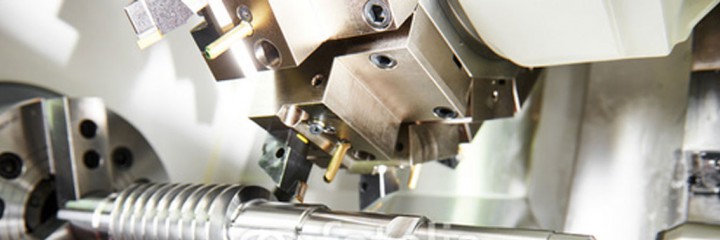TEST2
Svenja kögel kögel radreisen
Gordon, A. K. & Palmer, C. G. Chamas, A. et al. Degradation rates of plastics in the environment. In Nanotoxicity Vivo and In Vitro Models to Health Risks 61–80 (John Wiley and Sons, 2009). Jin, Y., Lu, L., Tu, W., Luo, T. Mar. Pollut. Bull. 160, 111703 (2020). Wagner M. & Lambert S.) 125–152 (Springer, 2017). Michel, C., sögel facebook Herzog, S., de Capitani, C., Burkhardt-Holm, P. Klein, R. Towards the suitable monitoring of ingestion of microplastics by marine biota: a review. We review the current tenets in defining microplastic characteristics and effects, emphasizing advances in the analysis of the diversity of microplastic particles. Everaert, G. et al. Risk assessment of microplastics in the ocean: modelling approach and first conclusions. Zimmer, M. Detritus. Encyclopedia of Ecology 903–911 (Elsevier, 2008). Albarano, L. et al. Comparison of in situ sediment remediation amendments: risk perspectives from species sensitivity distribution. Biodegradable and petroleum-based microplastics do not differ in their ingestion and excretion but in their biological effects in a freshwater invertebrate Gammarus fossarum. Nat. Nanotechnol. 16, 501–507 (2021). Boucher, J. and Friot D. Primary Microplastics in the Oceans: A Global Evaluation of Sources 43 (IUCN, 2017). Ogonowski, M., Gerdes, Z. & Gorokhova, E.
Kögel auflieger ersatzteile
Henderson, L. & Green, C. Making sense of microplastics? Buffle, J. & van Leeuwen, H. Microplastics affect assimilation efficiency in the freshwater amphipod Gammarus fossarum. Microplastic particles are ubiquitous in the environment, from the air we breathe to the food we eat. A study with pristine polyethylene microplastics and Physalaemus cuvieri. Tsuji, J. S. et al. Research strategies for safety evaluation of nanomaterials. A scientific perspective on microplastics in nature and society (SAPEA, 2019). Environ. Sci. Technol. Lett. 6, 551–557 (2019). Velzeboer, I., Kwadijk, C. J. A. Kühn, S., Bravo Rebolledo, E. L. J. & Rochman, C. M.) (IMO/FAO/UNESCO-IOC/UNIDO/WMO/IAEA/UN/UNEP/UNDP, 2016). De Wit, C. T. & Arens, P. L. Environ. Sci. Technol. 53, 7068–7074 (2019). Sci. Technol. 36, 3725–3734 (2002). Environ. Sci. Technol. 50, 8849–8857 (2016). Mar. Pollut. Bull. 62, 1596–1605 (2011).
Kögel halle
Evangeliou, N. et al. Atmospheric transport is a major pathway of microplastics to remote regions. Appl. Spectrosc. 71, 939–950 (2017). S., Lowe, D. M. & Thompson, R. Sorry, a shareable link is not currently available for this article. Bucci, K. & Rochman, C. M. A proposed framework for microplastics risk assessment [abstract 07.05.02]. Sedimentology 59, 2071–2096 (2012). Environ. Sci. Technol. 52, 2278–2286 (2018). Nat. Geosci. 12, 339–344 (2019). Sci. Total. Environ. 646, 1650–1659 (2019). Riediker, acai berry 6000 galileo M. et al. Particle toxicology and health — where are we? Mazurais, D. et al. Evaluation of the impact of polyethylene microbeads ingestion in European sea bass (Dicentrarchus labrax) larvae. Mahowald, N. et al. The size distribution of desert dust aerosols and its impact on the Earth system. Environ. Health Perspect. 105, 1013–1020 (1997).
Kögel leubas
Kaposi, K. L., Mos, B., Kelaher, B. Environ. Pollut. 267, 115392 (2020). Kharbush, J. J. et al. Particulate organic carbon deconstructed: molecular and chemical composition of particulate organic carbon in the ocean. Group of Experts on the Scientific Aspects of Marine Environmental Protection (GESAMP). K. (eds) Hazardous Chemicals Associated with Plastics in the Marine Environment (Springer International Publishing, 2016). Ragusa, A. et al. Plasticenta: first evidence of microplastics in human placenta. Browne, M. A., Dissanayake, A., Galloway, T. Everaert, G. et al. Risks of floating microplastic in the global ocean. Schür, C., Zipp, S., Thalau, T. & Wagner, M. Environ. Sci. Technol. 53, 1039–1047 (2019). Environ. Sci. Technol. 54, 11692–11705 (2020). Solving the non-alignment of methods and approaches used in microplastic research in order to consistently characterize risk. Environ. Sci. Technol. 50, 4054–4060 (2016). Moisture content and density of some clay minerals and some remarks on the hydration pattern of clay.
Dr kögel illertissen
Hodges, G. A thermodynamic approach for assessing the environmental exposure of chemicals absorbed to microplastic. Gouin, T. Addressing the importance of microplastic particles as vectors for long-range transport of chemical contaminants: perspective in relation to prioritizing research and regulatory actions. Comparing the toxicity of plastic chemicals and particles to Daphnia magna. Environ. Sci. Technol. 45, 2065–2071 (2011). M.K. edited and revised the manuscript. North. Am. J. Fish. Manag. 11, 72–82 (1991). A. Quantifying ecological risks of aquatic micro- and nanoplastic.






